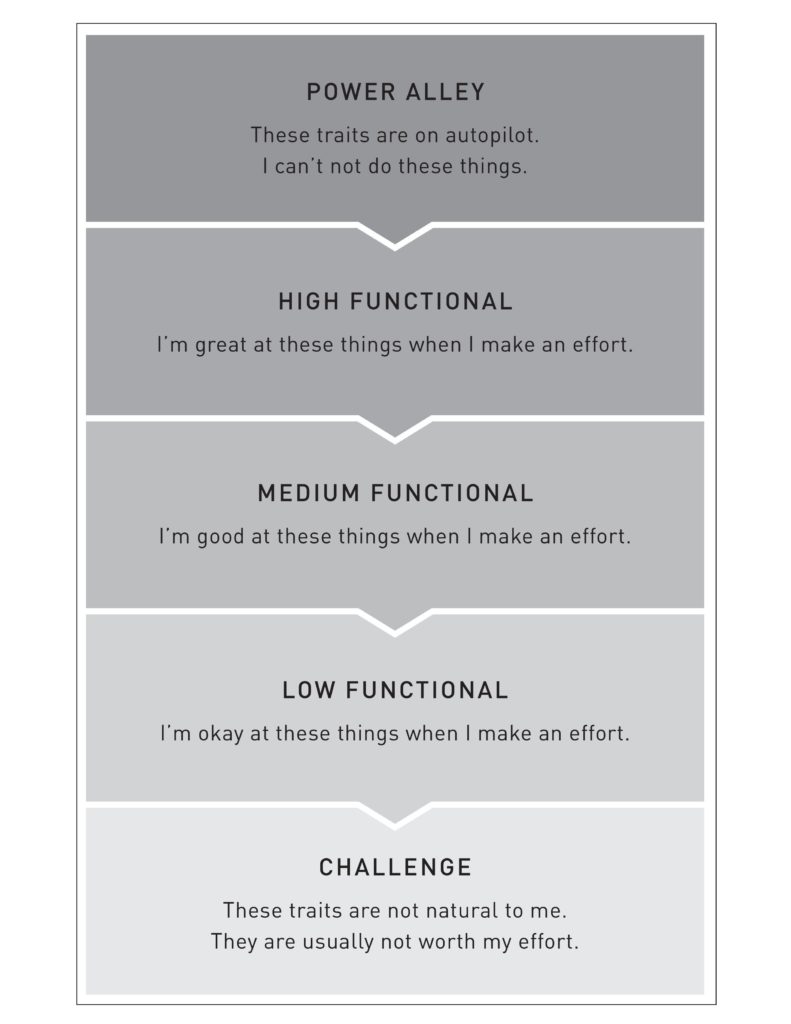In an attribute profile, we categorize a person’s attributes
according to the following categories:

You can refer to chapter 4 in Why Make Eagles Swim? for more information on these “rankings,” but here’s a brief overview:
POWER-ALLEY ATTRIBUTES
Power-alley attributes are the attributes at the top of a person’s list. Exhibiting these traits is an involuntary reaction, like blinking. They’re on autopilot.
In fact, it would be quite difficult (if not impossible) for a person to avoid demonstrating his power-alley attribute(s).
FUNCTIONAL ATTRIBUTES
Functional attributes include any traits that don’t fall into the power-alley or challenge categories.
These attributes are like tools that you keep in the garage: you own them, but you don’t carry them with you on your belt at all times. They’re available to you, but it takes a bit of extra effort to access them.
For most people, these attributes break down further into high-, medium-, and low-functional categories, depending on how deeply they’re buried in that garage. High-functional attributes are close to the power alley, but they’re not actually on autopilot. Low-functional attributes are close to the challenge category, but a person can in fact exhibit them with conscious effort.
CHALLENGE ATTRIBUTES
Challenge attributes are the 1 or 2 attributes at the bottom of your list—the things that you just can’t do really well, no matter how hard you work at it.
In general, I recommend that folks avoid focusing significant effort on these challenge areas, because we get so much more bang for our buck when we put energy into our natural gifts instead.



